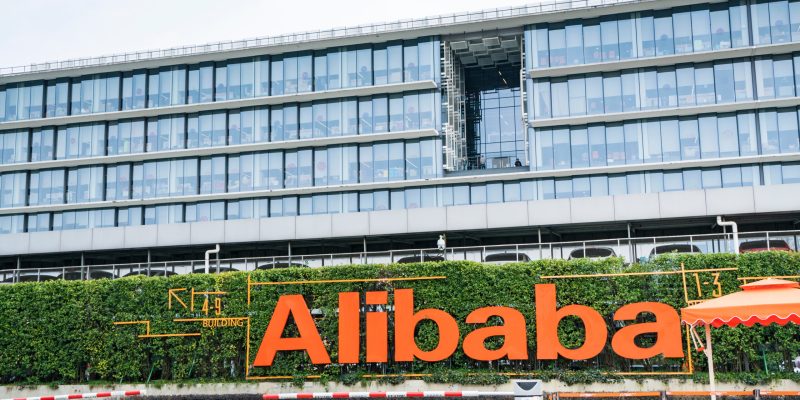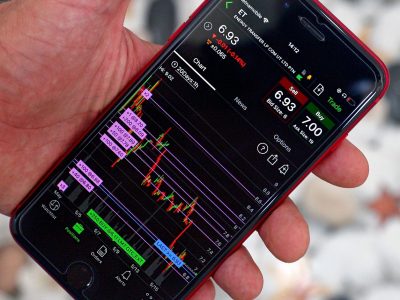
Alibaba Group Holding Ltd (NYSE: BABA) has surged over 20% this week, reaching a one-year high amid a significant rally in Chinese stocks.
This upward momentum follows a series of positive developments, both from the company and macroeconomic policies, signaling a potential end to the bearish downtrend that has plagued the stock.
Beijing’s stimulus measures boost investor confidence
The surge in Alibaba’s stock price coincides with Beijing’s announcement of a comprehensive stimulus package aimed at boosting China’s economy, the world’s second-largest.
The measures include support for the troubled property sector, direct cash assistance to residents facing financial difficulties, and enhanced social security benefits for unemployed graduates.
These policies have alleviated investor concerns about high youth unemployment and mounting debt in the property market, leading to a rally not just in Alibaba’s shares but across major Chinese tech stocks.
Advancements in artificial intelligence and strategic partnerships
Alibaba has made significant strides in the artificial intelligence (AI) sector.
The company unveiled over 100 open-source AI models based on its large language model, Qwen 2.5, designed for applications in industries such as automotive, gaming, and scientific research.
Notably, Alibaba introduced a new text-to-video tool leveraging these AI models, enhancing its technological edge amid a competitive landscape where rivals like Baidu and Tencent are also cutting prices on their AI offerings.
In a strategic shift, Alibaba will soon allow payments through Tencent’s WeChat app on its e-commerce platforms Taobao and Tmall.
This move marks a significant change in Alibaba’s payment ecosystem, which has historically promoted Alipay, its own payment service.
By integrating WeChat Pay, Alibaba aims to attract users from smaller cities and broaden its customer base, leveraging WeChat’s vast user network of over 1.35 billion people.
Financial performance and regulatory developments
Financially, Alibaba reported mixed results in its most recent quarter.
While the company’s non-GAAP earnings per ADS fell 5% year-over-year to RMB16.44 ($2.26), surpassing analyst expectations, revenue grew by about 4% to RMB243.24 billion ($33.47 billion), missing estimates by $1.15 billion.
The slight revenue miss was attributed to a slower-than-expected recovery in consumer spending and increased competition in the e-commerce space.
However, Alibaba’s international commerce segment showed robust growth, with a 32% year-over-year increase in revenue to RMB29.29 billion ($4.03 billion), driven by cross-border businesses like AliExpress and Trendyol.
Regulatory developments have also favored Alibaba recently.
China’s antitrust watchdog concluded a three-year regulatory rectification process, which began after Alibaba was fined $2.8 billion in 2021 for monopolistic practices.
The State Administration for Market Regulation praised Alibaba for complying with antitrust regulations, ceasing monopolistic behaviors, and improving its corporate compliance management system.
This conclusion removes a significant overhang on the stock, potentially restoring investor confidence.
Despite US chip restrictions, Alibaba continues to invest heavily in AI infrastructure.
Alongside tech giants Baidu and Tencent, Alibaba has more than doubled its spending on AI from the previous year, focusing on training large language models and enhancing its cloud services.
The company recognizes that over 50% of new computing power demand stems from AI, and it is committed to meeting the burgeoning needs of its customers despite current capacity limitations.
On the partnership front, Alibaba’s B2B e-commerce unit, Alibaba.com, has joined forces with payment processors Mastercard and Cardless to offer a credit card that rewards businesses for cross-border and domestic sourcing purchases.
The Alibaba.com Business Edge Credit Card is expected to be available later this year, aiming to streamline payment solutions for businesses and enhance Alibaba’s position in global trade facilitation.
Valuation
Alibaba’s forward adjusted PEG ratio stands at approximately 1.13, more than 25% below the sector median, indicating potential undervaluation relative to its peers.
The company’s profitability remains strong, with a focus on improving operational efficiency and reducing losses in non-core business units.
Alibaba also continues to return value to shareholders, repurchasing a total of 613 million ordinary shares (equivalent to 77 million ADSs) for $5.8 billion during the quarter, reflecting confidence in its long-term growth prospects.
Now, let’s see what the charts have to say about the stock’s price trajectory. Technical analysis may provide further insights into whether Alibaba’s recent surge is sustainable and if the bearish downtrend is indeed over.
$102.5 crossed, $122 remains
Following yesterday’s surge, Alibaba’s stock has broken above its long-term resistance level near $102.5 and is appearing extremely strong on the daily and weekly charts.
Source: TradingView
However, the next resistance at $122 is also in close vicinity.
Hence, investors who want to initiate a fresh long position in the stock must start with a small position at current levels and should add to it only if the stock gives a daily closing above $122.
Traders, who are bearish on the stock, must refrain from initiating fresh short positions unless the stock drops below $102.5.
The post Alibaba reaches 1-year high: is the bearish downtrend finally over? appeared first on Invezz









